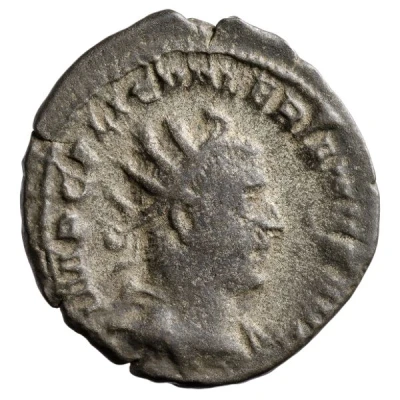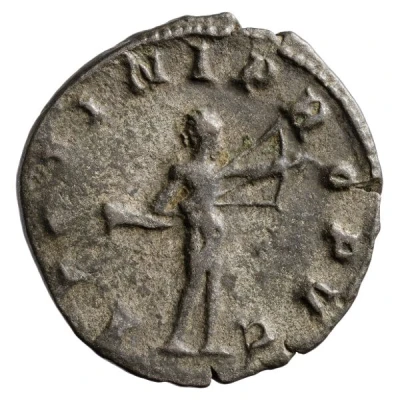


© Münzkabinett der Universität Göttingen (CC BY-NC 4.0 DE)
Antoninianus - Valerianus APOLINI PROPVG; Apollo
| Silver | 2.8 g | 21.5 mm |
| Issuer | Rome › Roman Empire (27 BC - 395 AD) |
|---|---|
| Emperor | Valerian (Publius Licinius Valerianus) (253-260) Gallienus (Publius Licinius Egnatius Gallienus) (253-268) |
| Type | Standard circulation coin |
| Years | 253-257 |
| Value | Antoninianus (1) |
| Currency | Antoninianus, Reform of Caracalla (AD 215 – 301) |
| Composition | Silver |
| Weight | 2.8 g |
| Diameter | 21.5 mm |
| Shape | Round (irregular) |
| Technique | Hammered |
| Demonetized | Yes |
| Updated | 2024-10-05 |
| Numista | N#285940 |
|---|---|
| Rarity index | 94% |
Reverse
Apollo, nude except for cloak flying behind, standing right, drawing bow.
Script: Latin
Lettering:
APOLINI PROPVG or
APOLINI PROPVGN
Comment
Mass varies: 2.18–3.498 g;Diameter varies: 21–22.9 mm;
Example of this type:
Münzkabinett der Universität Göttingen
Source:
Online Coins of the Roman Empire (OCRE)
Interesting fact
The Antoninianus coin featuring Valerianus (APOLINI PROPVG; Apollo) was issued during a time of great turmoil in the Roman Empire. Valerianus was co-emperor with his father, Gallienus, and the two ruled together from 253 to 257 AD. During their reign, the empire faced numerous challenges, including invasions by barbarian tribes, internal power struggles, and economic instability. Despite these challenges, the Antoninianus coin remained a popular and widely used denomination, reflecting the enduring influence of the Roman Empire on trade and commerce.